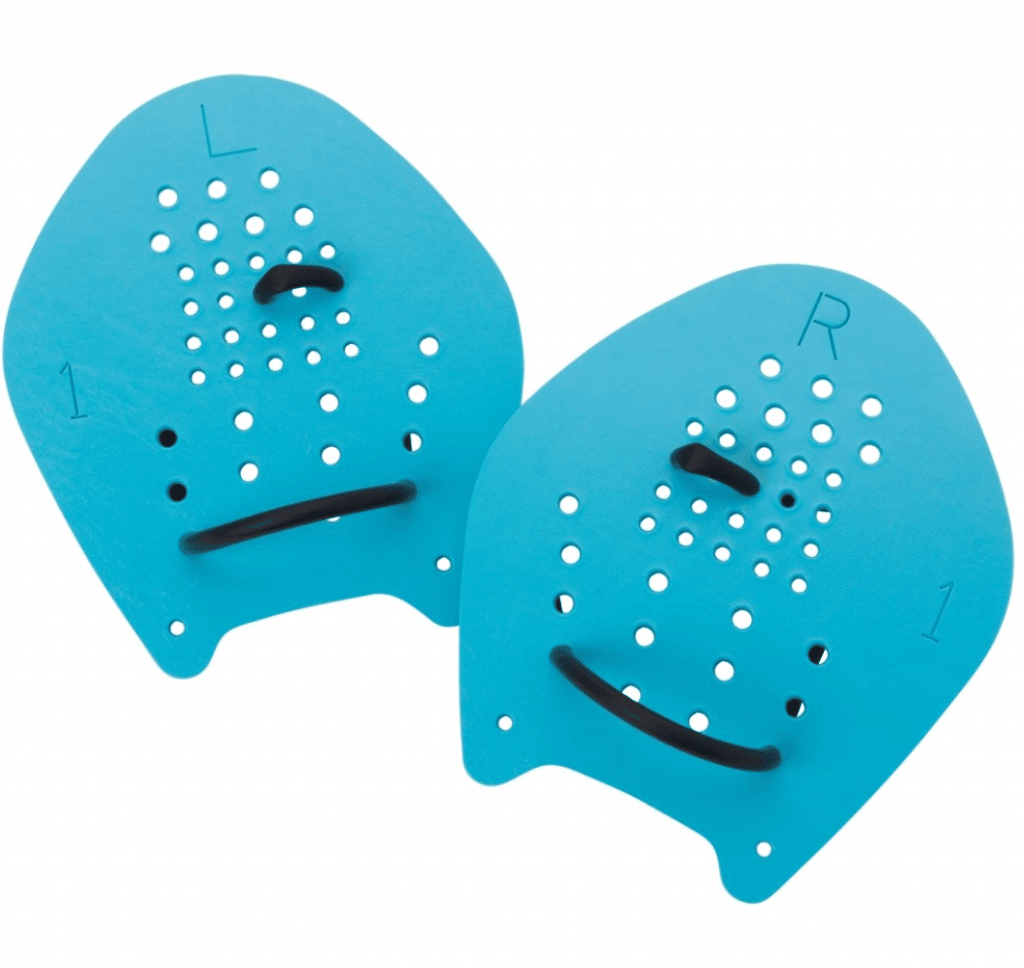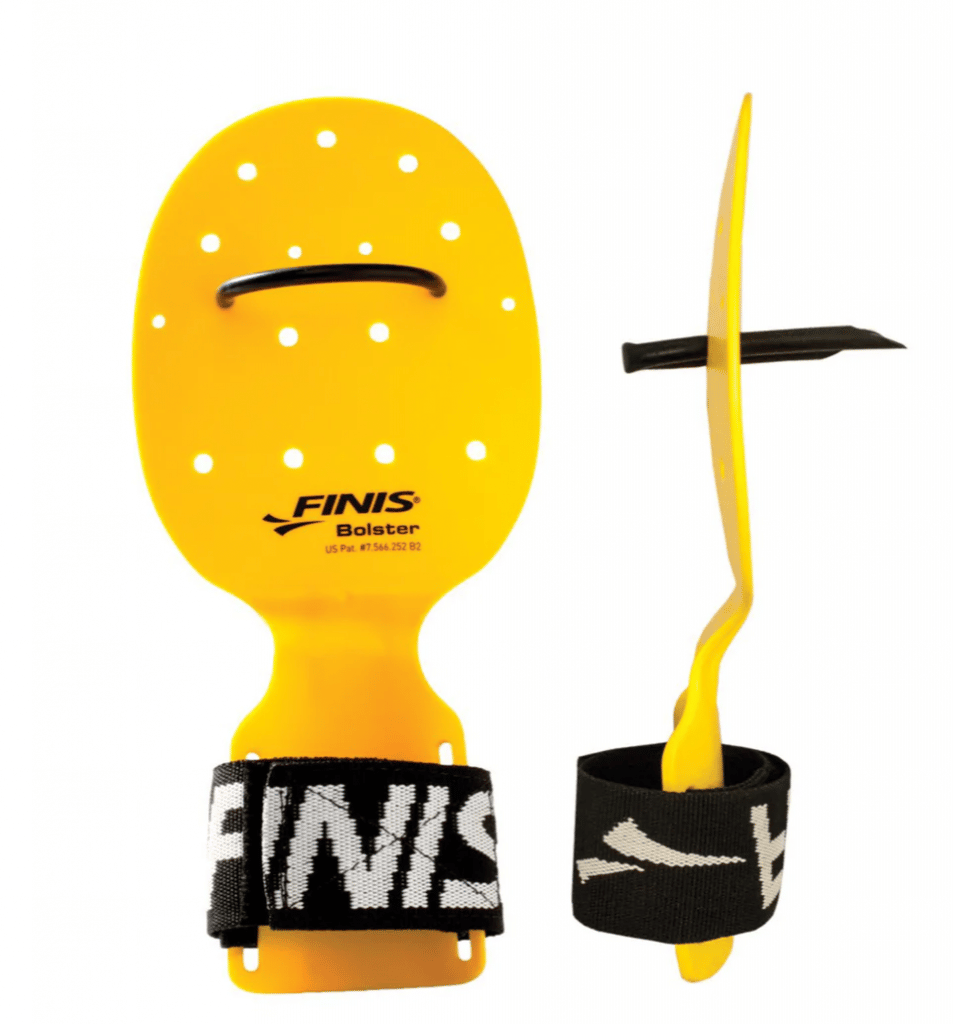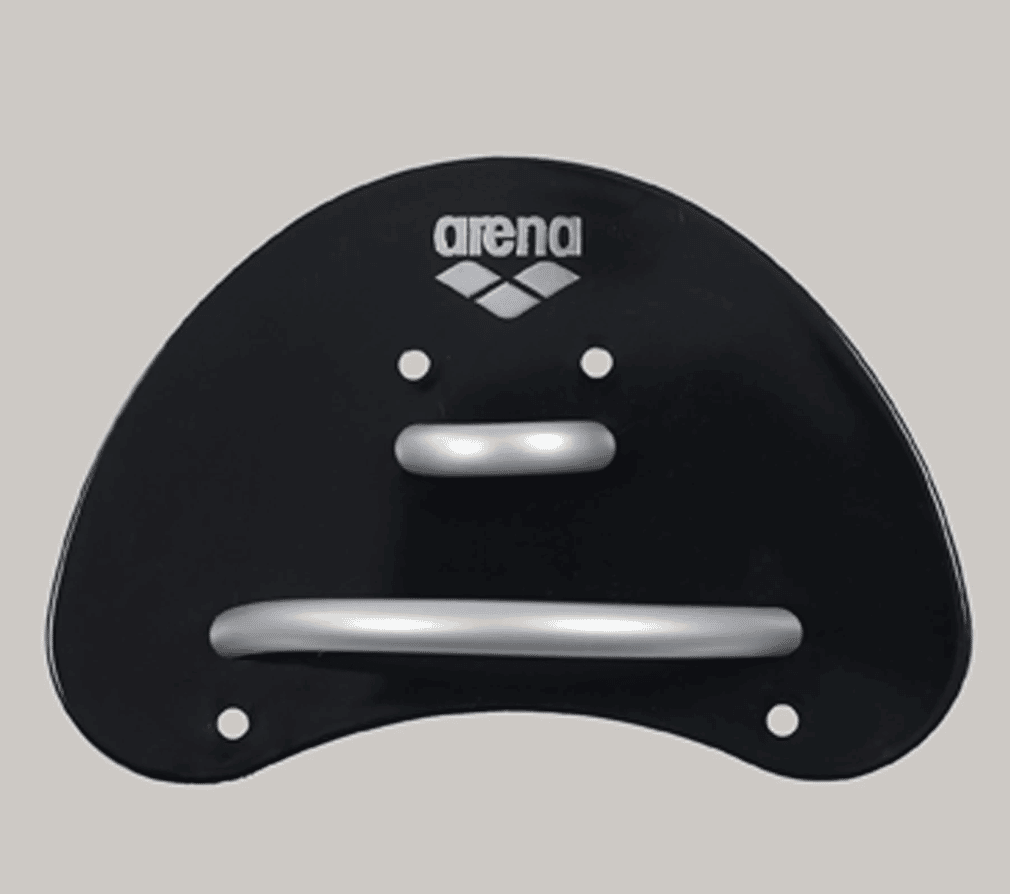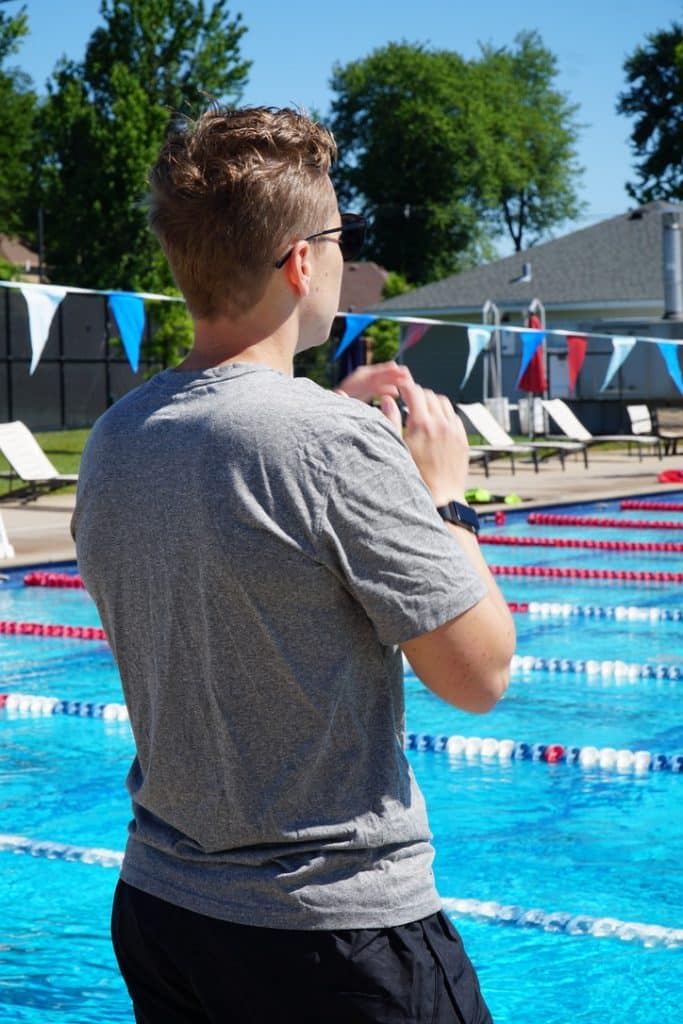Welcome back! Today, I woke up feeling like I needed to put some thoughts to rest and give y’all another progression on when it’s appropriate to start using swim paddles. We wrote a blog not too long ago about pull buoys and when it was appropriate for swimmers to start using those, so let’s dissect another piece of equipment in a swimmer’s mesh bag and give you a definitive guide on when to use swim paddles.
Let’s get started!
Swim paddles come in all shapes and sizes now. It actually is very overwhelming as a parent or coach to understand which swim paddles to needed for every swimmer – depending on their age and ability level. So practical purposes and ease of use for this blog, I categorized all swim paddles into 3 groups based on size. Let’s discuss them below:
Types of Swim Paddles
1.) The Traditional, Standard Paddles

These types of paddles cover the entire palm and can secure the wrist and selected number of fingers. You can also adjust these paddles using the different holes throughout the paddle to change where the paddle sits on the hand and/or if you use the wrist strap too. You can also grow with these paddles as your hand/wrist continues to get bigger. This type of paddle I would categorize as a medium size and you can find them at all the major swim equipment companies. They may have a different appearance (color, not totally flat, etc.), but the pretense is the same – it covers the full palm and allows a swimmer to push back and feel pressure on their entire hand.
2.) Forearm Swim Paddles

The purpose of these paddles is to help a swimmer learn the High Elbow Catch or Early Vertical Forearm. These are the largest style of paddles out there and come in an array of different styles. These paddles vary from traditional paddles because they extend past the palm and cover the wrist to keep a swimmer from flexing their wrist while swimming. Not allowing a swimmer to extend their wrist is key because it forces a swimmer to bend at the elbow and drop the Fingertips down to achieve that High Elbow Catch.
3.) Finger Tip Paddles

The smallest of paddles out there are called Fingertip Paddles. These paddles only fit from the base of the fingers to the top and allow a swimmer to feel a bit more pressure on their Fingertips only. These are great paddles for younger (and beginner) swimmers to start using, because they provide feedback on the Fingertips but at the same time – not a ton of resistance and extra stress to the shoulder joint.
4-Month Technique Season Plan

Coaches are going WILD about our 4-Month Technique Season Plan. It’s perfect for your summer, High School, or even club season. Check it out here!
What Swim Paddles Should I Use?
As you can see from above, swim paddles do come in all sizes and shapes – but based on what you’re working on and/or stroke you are swimming, some of these paddles may not be appropriate for you.
In general, you don’t want to start your swimmers using hand paddles until they can legally swim all 4 strokes. On top of that, you need to take into account transition time and how quickly (or slowly) your swimmers can get equipment on. Paddles (just like snorkels) can be finicky and swimmers can take a bit to secure them onto their hands. If you have the forearm paddles (biggest one), they can take even longer. So for younger kids under the age of 10, we do not recommend using paddles at practice. We recommend you start using paddles with swimmers ages 10+ and then progress their style of paddles from there.
Here is our recommendation progression with the different styles of swim paddles below:
Swimmers <9 years old: No Paddles
Swimmers 10 and 11 years old: Fingertip Paddles
Swimmers 12-13 years old: Traditional Paddles w/ Wrist Strap
Swimmers: 14-15 years old: Traditional Paddles w/o Wrist Strap
As a swimmer ages up, you will see a direct correlation with paddle size. It doesn’t mean that you cannot use paddles that are the recommended styles for swimmers younger than you (i.e., you are 13 years old, but you want to use Fingertip Paddles – YOU STILL CAN)! This is more so just saying what styles to avoid at what age, so you don’t over stress the shoulders or change a swimmer’s biomechanics too much.
You will also notice on this progression we didn’t include Forearm Paddles. I do like Forearm Paddles, but I find that they work better in a 1:1 setting versus a full group. I think selected swimmers needing to work specifically on their catch can benefit from Forearm Paddles, so this would be up to the coach to elect whether or not it’s appropriate for that specific swimmer and at that time.
Be sure to tune in next week, where we discuss what (if any) strokes besides Freestyle these other styles of paddles can accommodate and when you could use them.
Until Next Time,
Abbie Fish
